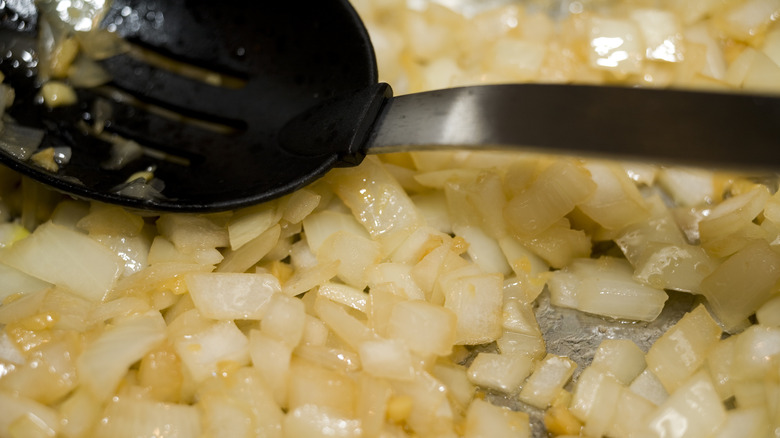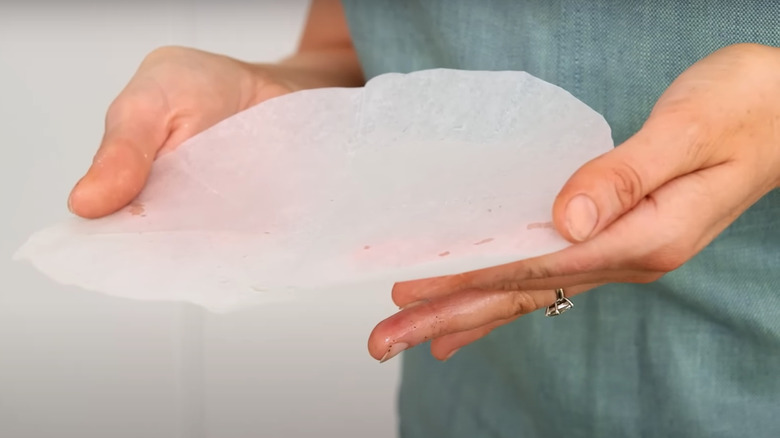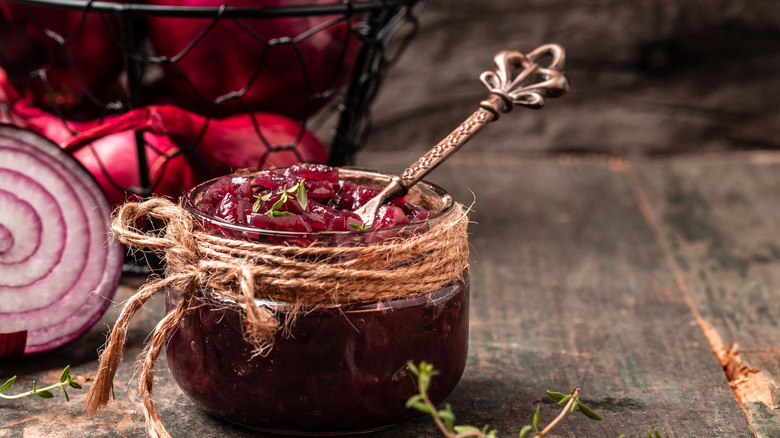How Long Should It Take To Sweat Onions?
The term "sweating onions" may conjure up some interesting imagery in your mind. It also sounds like it could be a lengthy process (after all, it takes some time for you to work up a sweat in the gym). But, the truth is that this cooking technique is a quick and easy way to build up a flavor base for savory dishes and can be accomplished in just a matter of minutes.
How long it takes to sweat onions sort of depends on how you're cutting them. If you prefer onion slices, sweating them may take 10 to 15 minutes. Diced pieces, on the other hand, have a smaller surface area and can be sweated in as little as five minutes.
Either way, the reason it doesn't take very long is because sweating is a technique meant to soften and remove moisture from aromatics, not to brown or caramelize them. With onions, the goal of sweating them is to get rid of the raw sharpness and bring out the sweetness to make them more palatable. It also helps to make them more pliable. After all, no one wants the crunch of raw onion in their marinara sauce.
How to properly sweat onions
There are a few variations to the sweating technique, but here are the basics: Cook low and slow with a small amount of fat. Most cooks recommend using a heavy-bottomed pan, which makes sense; you don't want your onions to burn. Heat your fat of choice, either butter or oil, in the pan and add the onions. Cover with a lid and stir periodically, making sure that the onions aren't browning or starting to burn.
If you want to get fancy, try a cartouche. This French technique employs a piece of parchment paper fitted to the pan's circumference that acts as a lid and traps steam, allowing the onions to cook more evenly and retain their moisture. You'll know your onions are thoroughly sweated when they appear translucent and soft. If the onions start to brown or burn, simply lower the heat and add a few drops of water to the pan to prevent any further caramelization.
What to do with your sweaty onions
Sweated onions (which sounds so much better than sweaty onions) are incredibly versatile and can be used in a wide range of dishes to add depth of flavor. The softened texture and the sweet flavor make them a super functional choice as a base for soups, stews, sauces, and sautes.
Let's not forget that sweated onions are the precursor to caramelized onions. After sweating the onions until they are soft and translucent, you can continue cooking them over low heat until they turn golden brown and develop a caramelized flavor. These caramelized onions are equal parts sweet and savory and can be used as a topping for burgers, sandwiches, or even pizza.
Sweated onions can be incorporated into dips, spreads, and condiments, such as onion jam or chutney, to add a burst of flavor. They can also be pureed to create a smooth and creamy texture that can be turned into a dressing or even blended into a soup.


